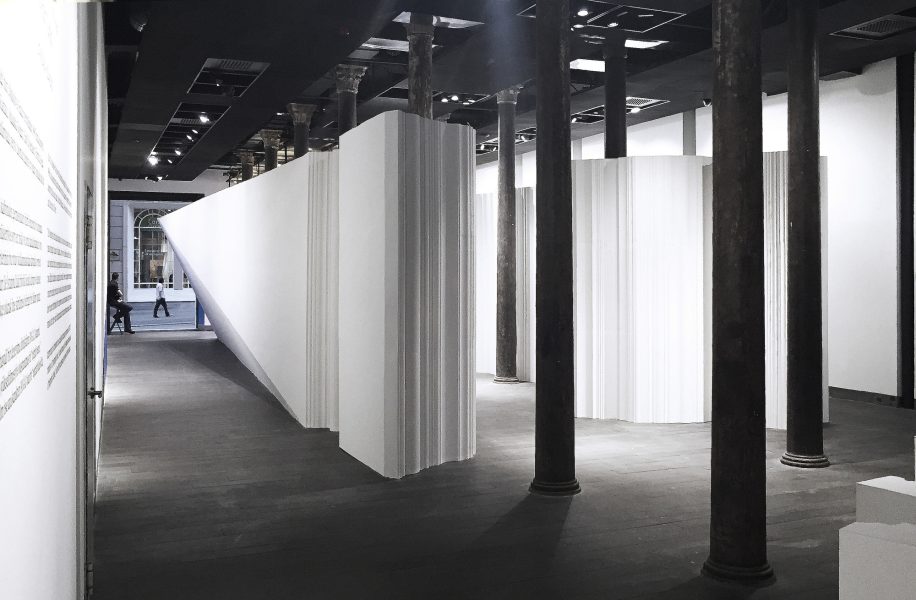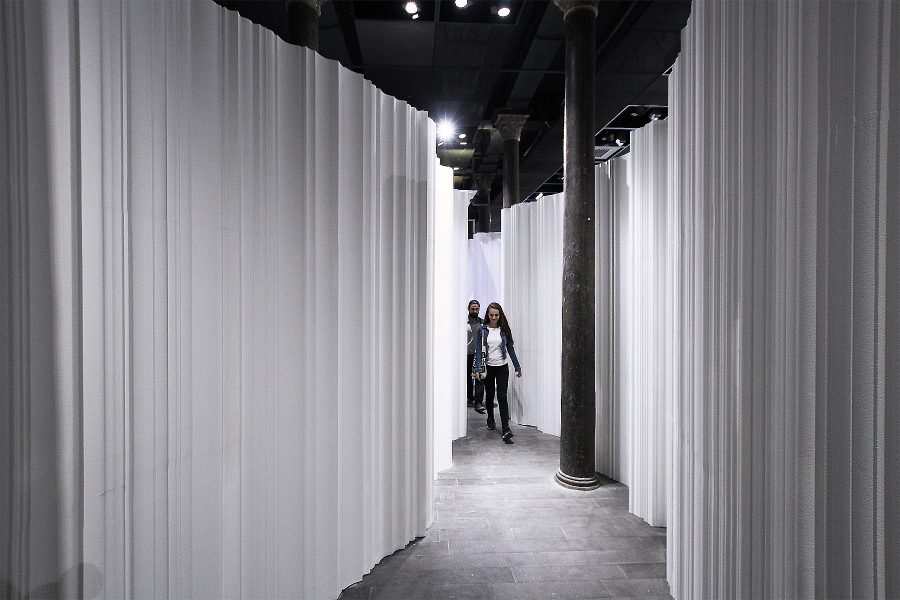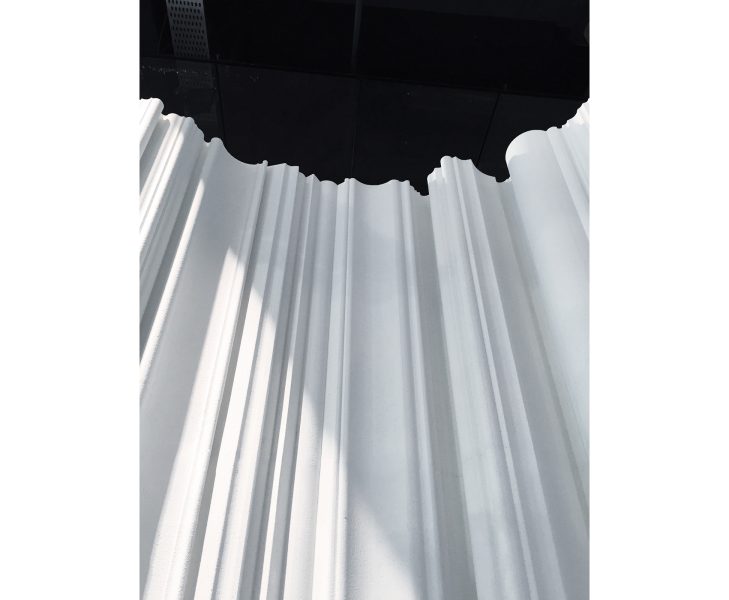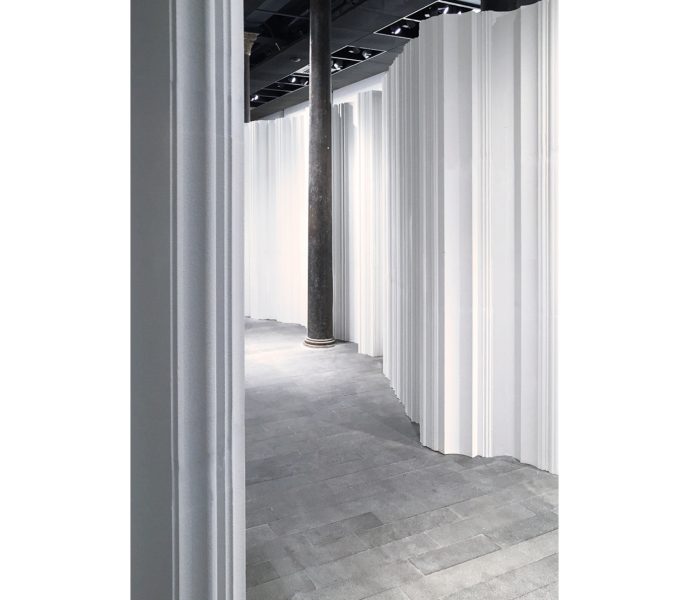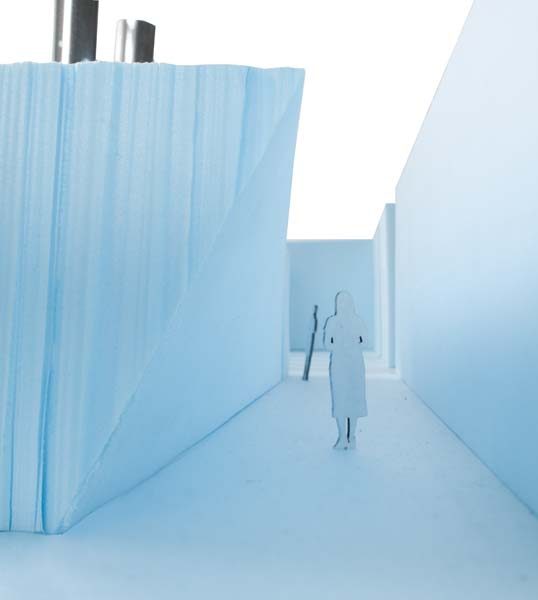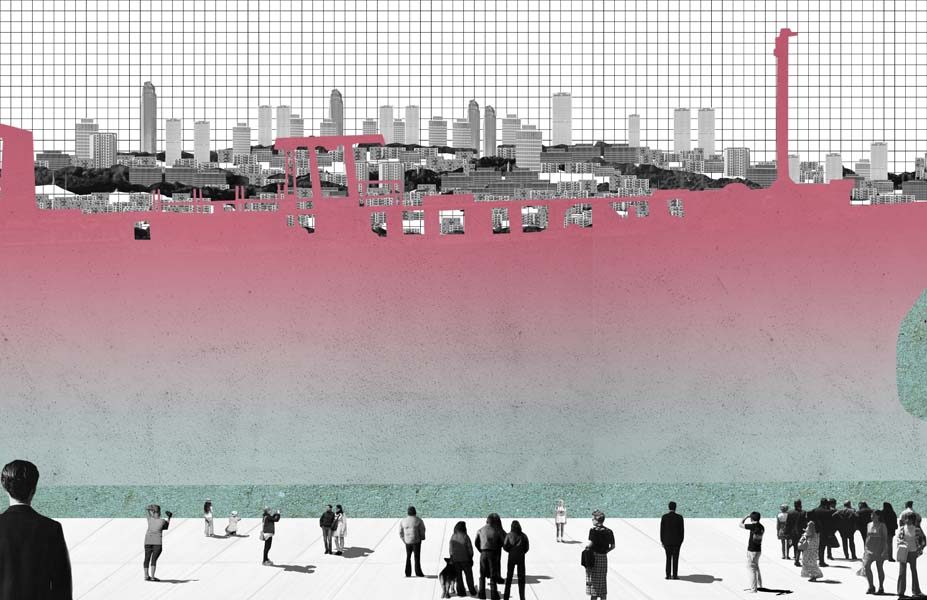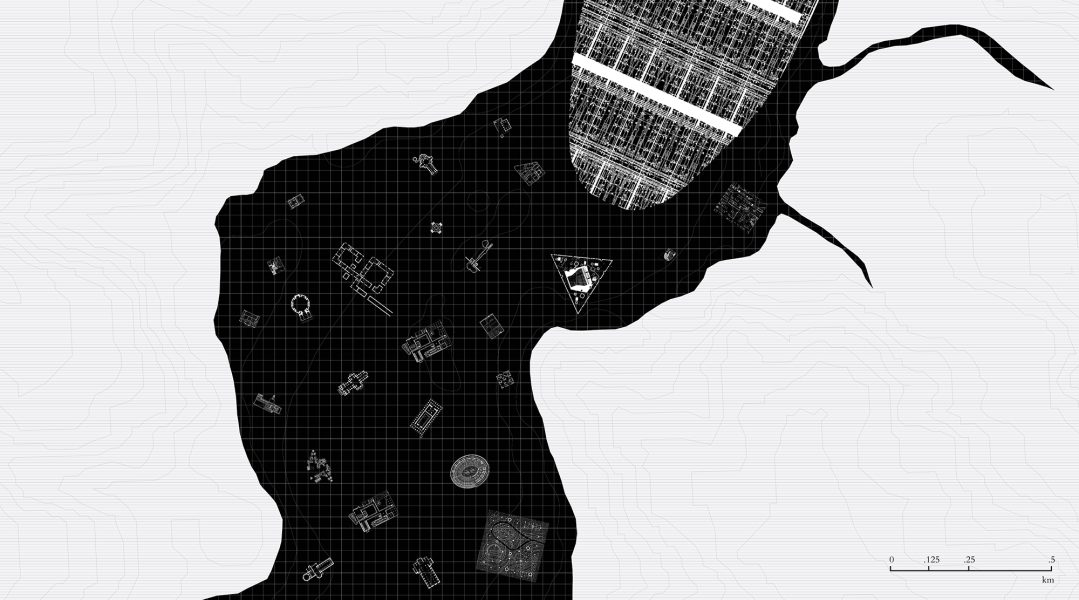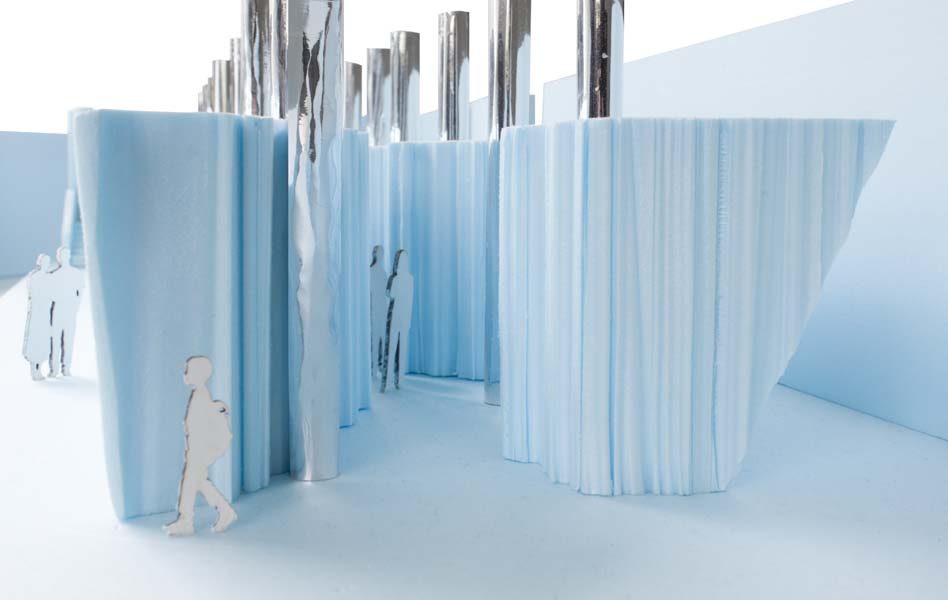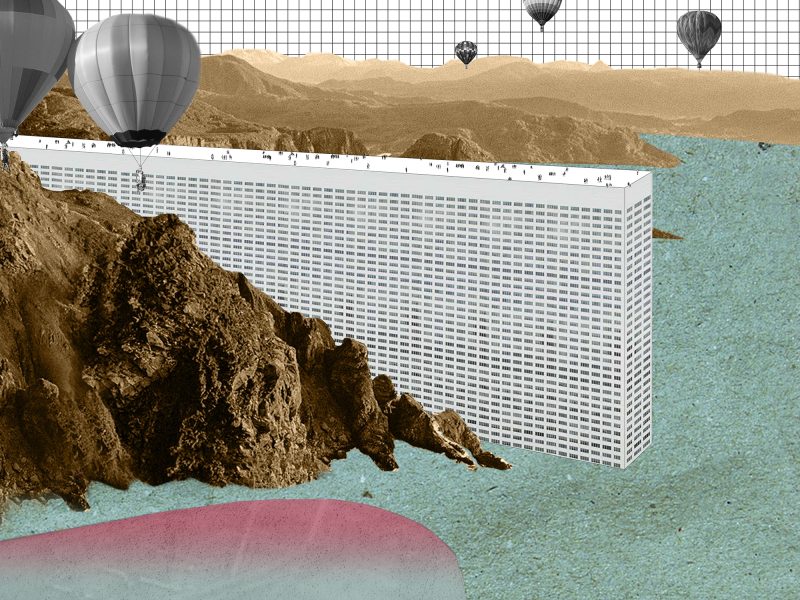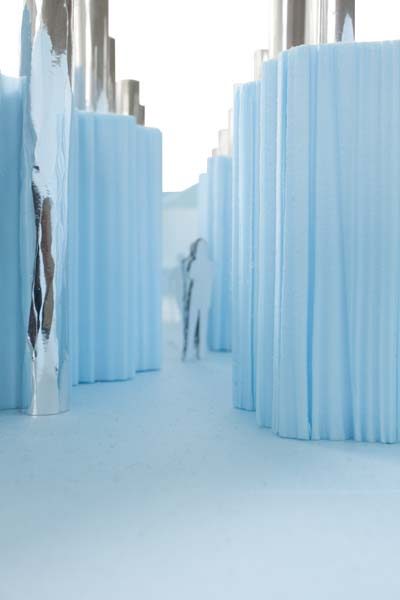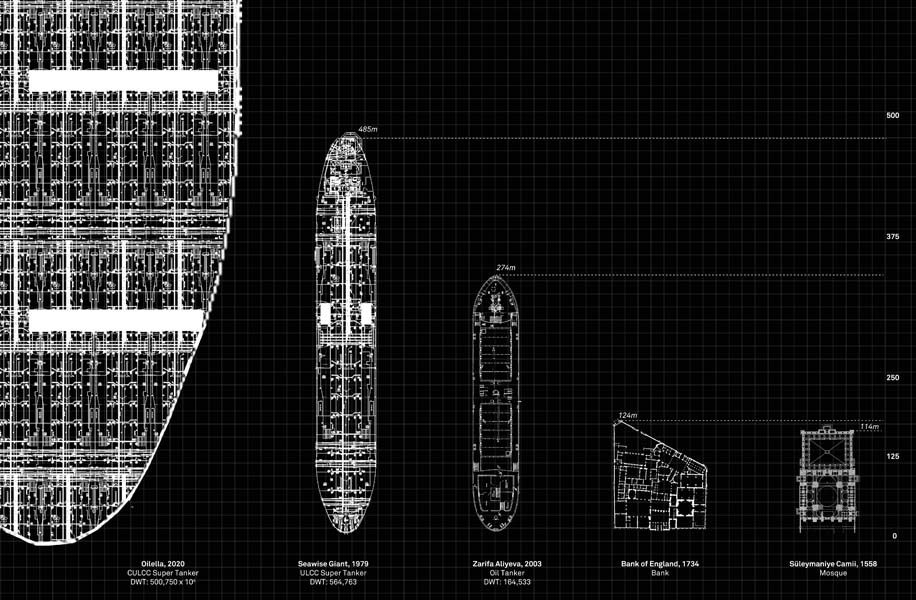Year: 2015
Type: Solo Exhibition/Installation (Built)
Research and design: Neyran Turan
Venue: SALT, Istanbul
NEMESTUDIO Project team: Neyran Turan (partner-in-charge), William Trotty, Amelia Hazinski, Melis Ugurlu, Anastasia Yee, Louis Weiss, Sam Biroscak.
Fabrication/Installation: Sani Karamustafa, Ömer Ilker Altın, Çınar Okan Erzarıç, Barış Kaya, Hüseyin Kaynak, Fuat Kazancı, Ergin Tasçı.
Press Coverage/Reviews: Daily Sabah, TimeOut Istanbul, PLOT, Arkitera
STRAIT installation frames the geographic scale as an experiential condition. It manifests the constrained and narrow Bosphorus Strait as a human-scaled passageway. The shape of the Strait's shoreline is extruded to the height of the ceiling, creating an object out of a map. Yet, as an abstraction of geographic information, this object renders the Bosphorus simultaneously more tangible and more abstract. STRAIT takes on this simultaneity through its form, presenting an almost "out-of-scale" monolith. By framing the geographic scale as an experiential condition, the exhibition opens up a range of aesthetic and political concerns for architectural imagination and the broader public.
In March 1994, a dramatic accident occurred in the Bosphorus Strait. Nassia, a 100,000-ton tanker carrying crude oil from the Novorossiysk port in Russia, collided with a cargo ship at the northern exit of the Strait. The cargo ship exploded and ran ashore, while Nassia immediately caught fire and released over 13,500 tons of oil into the sea. The spill and fire continued for weeks causing a devastating environmental disaster.
The 1994 tanker accident occurred at a delicate moment in the history of the Strait. After the collapse of the Soviet Union and the opening of the Caspian oil reserves in the 1990s, the Strait became one of the six busiest oil-shipping choke points in the world, along with the Suez Canal, the Straits of Malacca, Bab el-Mandab, the Strait of Hormuz and the Straits of Dover. Compared to the other routes however, the Strait stands unique by passing through the heart of Istanbul, a city of fourteen million citizens. What complicates the matter even further is the geographic form of the Strait, with its sharp and narrow turns, making it one of the most riskiest and difficult channels figure to navigate in the world.
Recalling sociologist Ulrich Beck's claim that "even the most restrained and moderate objectivist account of risk implications involves a hidden politics, ethics and morality," concomitant environmental concerns regarding the transit of colossal oil tankers through this narrow and difficult navigational route have been conflicted with the controversies around transnational energy pipelines and various other large-scale infrastructural and urban transformation projects.
STRAIT brings this framework to architectural and public imaginaries by manifesting the constrained and narrow Bosphorus Strait through the immediate experience of an installation object. It introduces the idea of the geographic object, in this instance, an extrusion of the Strait shorelines without articulating its actual topography. The STRAIT object amplifies the interplay between architectural and geographic scales by re-constructing the crenelated shorelines of the Bosphorus through local crown moulding [kartonpiyer] profiles, an ornamentation technique typically applied to the corners of interior ceilings.
In addition to the installation, the STRAIT is rooted in a geographic fiction illustrated through a series of drawings presented in the form a silent film. The drawings are highly speculative architectural representations, both in the sense of a theoretical conjecture and of a risky investment. On the one hand, they represent the geographic information in a highly abstract and fictional manner. On the other, they attempt to make the scale of the Bosphorus Strait more tangible through an architectural vocabulary. While this geographic fiction tells of a colossal oil tanker becoming stuck in the Bosphorus Strait, the installation object itself becomes one of the characters in the fiction.
Photo credits:
Images 1, 2, 4-5: Photo by NEMESTUDIO.
Image 6: Photo by Mustafa Hazneci.
